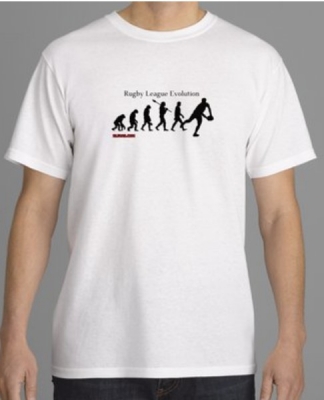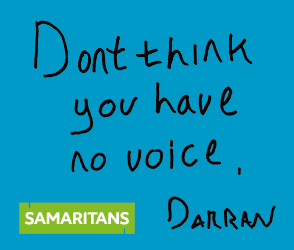TML League Rules 2009 : Sun Mar 15, 2009 10:48 am
Tag Rugby League Laws January 2009
RFL TML League
Tag Rugby playing guidelines
All distances provided are based on a 50 metre by 70 metre pitch for 7 a side games. This should be altered proportionally on the size of the pitch and number of players.
1. Tag Rugby is a non contact version of Rugby League, (Contact does happen in our game there is identified as a version of non contact where the contact between players is kept to a minimum.)
2. The game is suitable for all age groups.
3. The game can be played by mixed gender teams, the number of players per team shall be 7 versus 7. However, the game can be played by any numbers beginning at 4 v 4 to a maximum of 13 v 13.
4. Any use of additional players (substitutes/replacements) should be encouraged with all involved playing at least a minimum of half a game.
5. For 7 v 7, the pitch dimensions should be a gridded area of 50 metres wide and 70 metres long and be adjusted accordingly to accommodate any differing number of players. These dimensions are only approximations. Consideration must be given to the players having adequate space to play in an enjoyable manner with further consideration also being given to any safety aspects
6. The duration of each game should be 2 x 20-minute halves being the norm for 7 v 7 however can be adjusted for festival competitions
7. The game should be played with a size 4 standard rugby league ball.
8. The referee or person controlling the game will implement a 5 metre rule for the 7 v 7 defensive line but will move up to a maximum of 10 metres for a 13 v 13 a side game.
9. When playing Tag Rugby all players must wear a ‘tag belt’ or Tag Shorts which has two ribbons (tags) attached to velcro. The tags should be a contrasting colour from the shorts. The belt must be worn around the waist with all loose clothing tucked in. The tags are positioned on either side of the hips with teams being distinguished by the colour of tags they wear. The tags should be a contrasting colour from the shorts and shorts should not have any pockets. A player must be wearing both tags to pass or carry the ball. If a player receives the ball with one or no tags on, this will be deemed to be a tackle.
10. The team in possession has the ball for a maximum of six tags after which a handover of possession in the form of a play the ball will take place. Only the player in possession of the ball can be tagged. A tag is simply the removal by a defender of one of the two ribbons from the ball carrier’s tag belt. The attacker returns to where the defender is holding the tag and restarts the game by ‘playing’ the ball backwards with the foot in the correct manner. A defender must have two tags on in order to effect a tackle.
When a defender has removed the tag, he/she must stand still at the point at which
the tag was removed, hold the tag above their head and shout ‘tag’ for all to hear. Following the play the ball, the defender must present the ‘tag’ back to the tackled player immediately (NB: Neither the defender nor the ‘tagged’ player can take any further part in the game without both ‘tags’ properly in place on their belts). The referee must ensure that no-one throws away the tag to gain an advantage. In the event of throwing away the tag a penalty will be awarded and the mark advanced 10 metres forward, parallel to the touch line, and a play the ball will take place.
11. The dummy half can run and be tagged with the ball, but this rule can be changed depending on the age of the players. Younger age groups should be encouraged to pass from DH, so if caught in possession a handover PTB will occur.
12. . At no point should the defender use the momentum of his body to stop an attacking player. if this happens the referee should award a penalty and advance the mark 10 metres forward, parallel to the touch line, and a tap penalty should be awarded to the non-offending team. However a defender can stand his ground to stop an attacking player advancing. )
For continued, or severe offences, the referee to his/ her discretion may dismiss or temporary dismiss any player from the field of play.
13. If the ball carrier knocks off any of his/her own tags the tackle will be deemed as complete and the ball carrier must stand at the point where the tag lands and play the ball with the tackle count continuing with the number of the tackles being called by the referee
14. A try is scored in the normal way by placing or touching the ball down on or over your opponent’s goal line. Players can dive to score a try, however, if this player touches the ground with the knees or arms before the try line or slides across the line and a defender is within tagging distance a try is disallowed and a tag is counted.
15. Where a player has their tag removed from the belt whilst they are in their opponents’ in-goal area a play the ball should be taken 5 metres in-field, opposite where they were tagged, parallel to the touch line
16. When a player is tagged during the final tackle in their opponents in-goal area the defending team will have possession of the ball 5 metres in-field opposite where they were tagged, parallel to the Touch line.
17. Ball stealing is illegal and should be penalised.
18. All infringements will result in a tap penalty to the non-offending team at the place the infringement occurred, with the defending team retiring at least 10m:
• Forward pass
• Offside
• PTB off the mark
• Interfering with the PTB (defender)
• Delaying the PTB (attacker)
• Obstruction or interference with defence
19. The ball carrier is allowed to protect his tag or fend off defenders, from the chest down and higher this result in a penalty and an auto matic 5min sin bin.
20. No more than 2 in a tagging situation otherwise a penalty will be awarded.
21. A knock back is play on, but if a knock-on occurs then a handover and PTB will take place.
22. In games being played when its 7 v 7 a side, kicking is allowed after the 4th tackle only. Any games being played 13 a side kicking is allowed on any tackle. In Chasing a kick, the attacking team must give the player catching the ball at least 5 metres of space.
23. The game will commence with a kick off, at the centre of the field, for who ever wins the toss.
After a try has been scored, the scoring team will restart with a centre field kick off.
Non Contact New Players Rule
Before The Game Starts It must be agreed if the game is to be totally non contact for Girls, New Players or young Players
Or minimum Contact (open age only) 16 + for more experienced players or new, young players wanting to take the “next step” on their way to the full contact sport of rugby league.
When teams have a mixture of players of non-contact and semi contact the following rules apply.
For any player not wishing to have any type of contact in a minimum contact game the player will wear a high vis vest or similar. This player (new young or female if he or she wishes) will be deemed a non contact player and the non contact rules of standing ground, and fending off apply to this player only. Anyone breaking these rules will be subject to an automatic sinbin of 10 mins.








